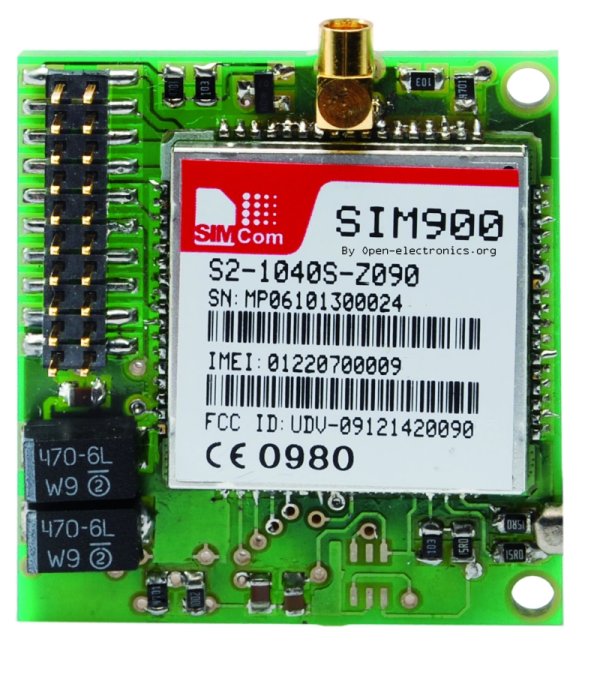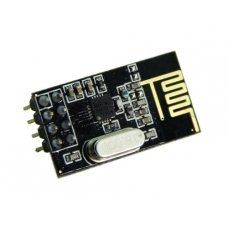One of the strongest trend we have seen this year at CES2015 is, as you can imagine easily, the IoT (Internet of Things) development. Consequently, the most important component needed is the “connection and communication” module that enables the remote interaction between the device and “the community” via internet. Here we will sum up the various possibilities you can use to connect your controller using different wireless protocols.
WiFi
ESP8266 WiFi Module is a WiFi serial transceiver module, based on ESP8266 SoC. This chip implements a full TCP/IP protocol stack and the very interesting feature is that it has also a great computational power onboard. That means that you can use this board as a simple WiFi connection board, offloading the main processor of your controller from the WiFi communication management. Or you can exploit its full power by implementing the logic inside the board itself. Thus you can manage sensors and elaborate autonomously their signals and measurements. Hosting simple applications onboard can let you make a very compact IoT solution.
- 32-pin QFN package
- Integrated RF switch, balun, 24dBm PA, DCXO, and PMU
- Integrated RISC processor, on-chip memory and external memory interfaces
- Integrated MAC/baseband processors
- Quality of Service management
- I2S interface for high fidelity audio applications
- On-chip low-dropout linear regulators for all internal supplies
- Proprietary spurious-free clock generation architecture
- Integrated WEP, TKIP, AES, and WAPI engines
- 11 b/g/n
- Wi-Fi Direct (P2P), soft-AP
- Integrated TCP/IP protocol stack
- Integrated TR switch, balun, LNA, power amplifier and matching network
- Integrated PLLs, regulators, DCXO and power management units
- +19.5dBm output power in 802.11b mode
- Power down leakage current of <10uA
- Integrated low power 32-bit CPU could be used as application processor
- SDIO 1.1/2.0, SPI, UART
- STBC, 1×1 MIMO, 2×1 MIMO
- A-MPDU & A-MSDU aggregation & 0.4ms guard interval
- Wake up and transmit packets in < 2ms
- Standby power consumption of < 1.0mW (DTIM3)
There is a dedicated wiki you can read for full specs and, much pleasant, the board is very cheap: check it on our store.
Bluetooth/BLE4.0
Bluetooth is and will be one of the most used wireless protocols in IoT specifications, especially with the recent introduction of Bluetooth Low Energy extension, also known by Apple users as iBeacon. The benefits of BLE protocol became widespread understood when Bluetooth 4.0 release implemented them into the mainstream core. The advantage of this standard is its extremely low power consumption, which helps the making of full battery powered boards with a working time longer than 1 or 2 years in some cases. Another feature, already implemented on many smartphone, is the possibility to embed the management protocol directly at kernel level without requesting any intervention by the users. This facilitates the setup of a mesh network of Bluetooth devices, with lower latency and higher range respect to standard Bluetooth. A detailed comparison between the old and the new release can be found here.
Coming back to our overview, we will sell very soon this board: the Bluetooth V4.0 HM-11 BLE Module.
This is a SMD BLE module based on TI cc2541 chip, very cheap, small and easy to use. The preloaded firmware allows you to quickly build BLE communications via its AT command. Supporting BLE communications with iPhone, iPad (iOS 5.0 or greater) and Android 4.3 or greater.
Specs following:
- Bluetooth Specification V4.0 BLE
- Working frequency: 2.4 GHz ISM band
- Modulation method: GFSK (Gaussian Frequency Shift Keying)
- Transmission power: – DBM, 23-6 DBM, 0 DBM, 6 DBM, can be modified by the AT command
- Uses TI CC2541 chip
- Power supply: DC 3.3V
- Communication protocol: Uart(TTL)
- Default baud: 9600bps
- Transmit current: 15mA
- Receive current: 8.5mA
- Deep sleep current: 600uA
- Operating temperature: -40 ~ 125°C
- Outline dimension: 13.5 x 18.5 x 2.3mm
Another interesting board that has the advantage of being very cheap and a very well-known solution for “Arduiners” is the famous HC-05 Bluetooth module. Googling it, it is very easy to find tons of tutorial on how to connect and configure this board to make it working with Arduino, like at instructables.
Here are a few specs, interesting even if it is an old BT2.0 release board:
- 4G GHz Serial Port Bluetooth Module
- Master/Slave roles
- Bluetooth Specification v2.0+EDR
- Frequency: 2.4GHz ISM band
- Modulation: GFSK(Gaussian Frequency Shift Keying)
- Emission power: =4dBm, Class 2
- Sensitivity: =-84dBm at 0.1% BER
- Speed: Asynchronous: 2.1Mbps(Max) / 160 kbps, Synchronous: 1Mbps/1Mbps
- Security: Authentication and encryption
- Power supply: +3.3VDC 50mA
For more detail: Top 5 Wireless Ways to Communicate with your Controller


